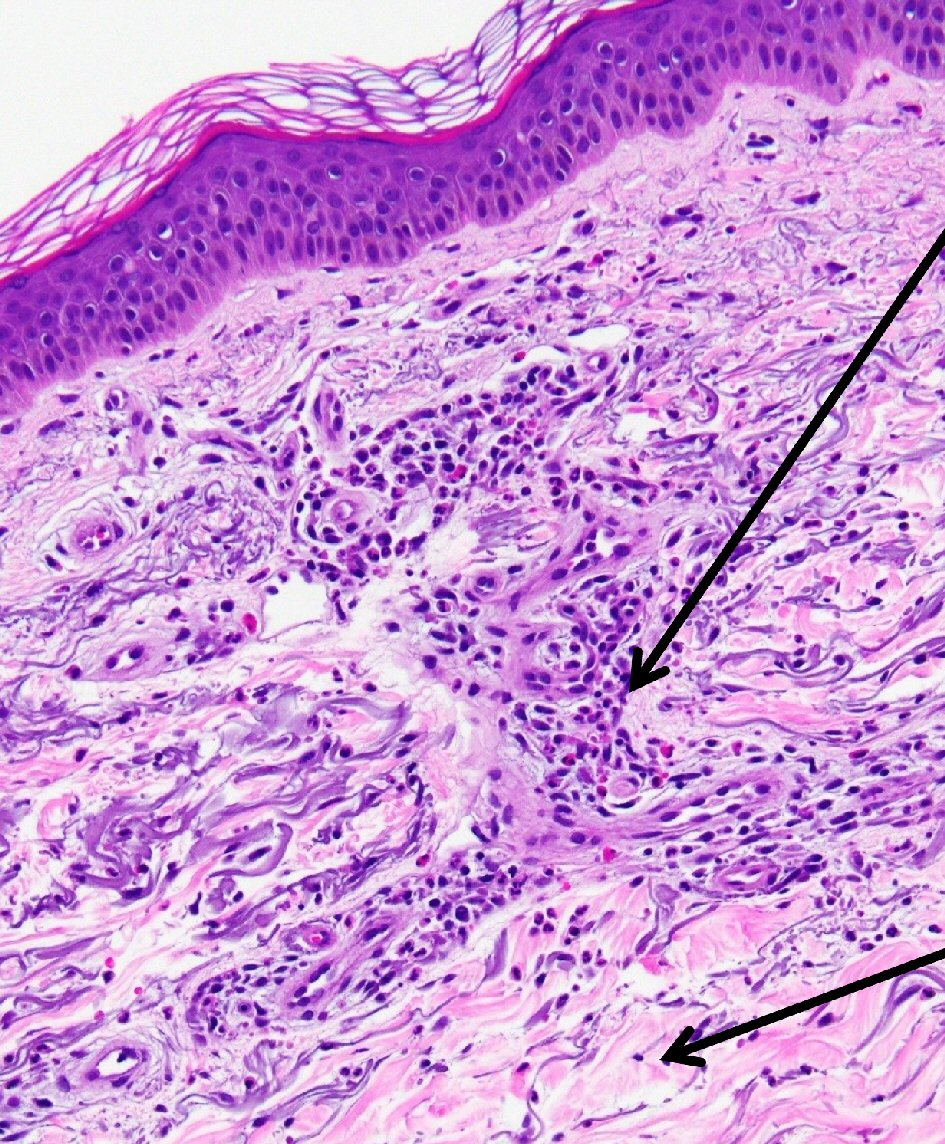
Figure 1. Skin punch biopsy of right forearm. Histopathologic examination revealed neutrophilic and eosinophilic infiltration of the dermis, including perivascular mixed inflammatory infiltrate suggestive of urticaria (hematoxylin and eosin (H&E), × 20). Perivascular mixed infiltrate of lymphocytes, eosinophils and neutrophils (upper arrow); surrounding sparse mixed inflammatory interstitial infiltrate with accompanying dermal edema (lower arrow).